|
As stated in my previous two blog posts, you'll see embroidered items everywhere you turn on Crete. But due to language problems and an overall decline in needlework in recent years, researching a particular type of embroidery can be hard. And I got all confused when I was told time and time again that the particular items I had seen were woven and not stitched. I was pretty sure this wasn't true for the pieces I had seen in my hotel and in various churches. But it was true for the cheap mono-coloured tourist souvenirs on display in the streets. What's going on here? This is the type of folk embroidery (or is it weaving?) I am talking about. Without even looking at the back, this screams 'embroidery' to me. To me this is a counted thread technique known as darning. I just love the winged dragons and the overall bright colours contrasting with the white background! And here is the back. Clearly, this is embroidery. Executed with cotton threads (probably DMC stranded cotton) on a closely woven thicker linen. Here is an even finer example. Can you see the tiny seeding stitches filling the space between the cocks and between the elements of the vine? They are even present in the two smaller borders. Why are they there? Let's turn the piece over. Those tiny seed stitches on the front anchor the thread that's carried across from design element to design element. Without those tiny stitches, the thread carried at the back would be far too long and far too loose. Clever, isn't it?! Could this one be machine embroidered or even have been woven on a loom? The example further above and below, do clearly not carry threads across empty spaces. Here's another example. Not the very fine fabric and the much thicker embroidery threads in comparison. And the last one. Not so sure of the design on this one :).
Unfortunately, I forgot to take a picture of the touristic souvenir ones. Design-wise they display the same elements. But they are not colourful. The whole design has the same colour and it is usually in tone with the background (think beige on cream). Or at least that's the ones I have been shown. So, what's going on here? Do embroiderers and weavers use the same the designs when making tablecloths and table runners? Or does the embroiderer copy the weaver in style and technique or vice versa? Maybe because weaving is much quicker than stitching? And why was it that none of the embroidery ladies I spoke with considered this embroidery at all? Well, that might be due to the embroidery technique involved. After all, these darning patterns are achieved when you use your needle and thread in a weaving motion! Fascinating don't you think? And now: over to you! Have you ever seen this type of embroidery before? What is it called? What materials are used? Where can I find patterns? I am aware of the Dutch darning samplers and the new book on 'Pattern darning from Norway' by Yvette Stanton. In my opinion, what makes the embroideries from Crete differ, is that they not only depict geometrical patterns. I really love the roosters, the dragons and the floral motives. So over to you! Please share your knowledge and experiences in a comment!
15 Comments
Karen Coleman
30/4/2018 23:29:49
Embroidery tends to have a front and a back, in my opinion. Occasionally a very skilled stitcher will create pieces that are perfect on both sides of the fabric. Most who embroider make the ends of their stitches land on the back of their material. Woven pieces are generally created to have both sides presentable, with few thread ends or knots visible. I own tapestries that are obviously woven.
Reply
1/5/2018 17:38:38
Thank you Karen for your comments! I am still unsure if this is embroidery or was woven. Especially after seeing pictures of such work on a loom as posted on Facebook in the Needle 'n Thread group.
Reply
Anne Hummel
1/5/2018 22:24:12
I think the rooster piece is a form of overshot weaving or a type of Swedish weaving whose name I need to look up. Overshot allows for a pattern to be woven over top of a tabby. Common technique that I have yet to try. 2/5/2018 08:02:11
Thank you very much for identifying the weaving technique Anne!
Mary Riedel
26/8/2020 00:24:03
That is very reminiscent of Assisi embroidery motifs but in multiple colors.
Reply
Nancy Anne White
1/5/2018 02:30:24
We lived in Panama for a few years when I was very young. My mother had several skirts and matching purses in cotton threads that had beautiful woven patterns! Looking at the front, these appeared to be embroidered, but they were hand woven in narrow strips and then sewn together. The patterns were very elaborate geometric designs. One was black with white designs. The other emerald green with off white designs.
Reply
1/5/2018 17:40:36
These woven fabrics sound stunning Nancy! Were these strips tablet weaving? Or where they woven on a loom?
Reply
Velia Antila
1/5/2018 05:06:59
Beautiful work, thanks for sharing.
Reply
1/5/2018 17:41:33
Yes, it get's harder and harder to see true textile artists at work, Velia!
Reply
1/5/2018 17:42:18
That's interesting Rachel! Maybe they were souvenirs too?
Reply
Tineke Tinbergeb
3/5/2018 19:34:41
Hoi Jessica, wat een leuk borduurwerk,
Reply
It's called "vävsöm" in Swedish. There are finds from southeastern Sweden (including the island of Öland), in Kalmar county museum, and on the island of Gotland, in the Gotland county museum. All are dated to the 18th century.
Reply
6/5/2018 09:35:18
Thank you so much for the links Lena! Yes, this looks much like what I saw on Crete. And the modern pattern the lady drew, looks exactely like a pattern I was able to photograph. So at least some of it is pattern darning rather than woven on a loom.
Reply
Your comment will be posted after it is approved.
Leave a Reply. |
Want to keep up with my embroidery adventures? Sign up for my weekly Newsletter to get notified of new blogs, courses and workshops!
Liked my blog? Please consider making a donation or becoming a Patron so that I can keep up the good work and my blog ad-free!
Categories
All
Archives
July 2024
|
Contact: info(at)jessicagrimm.com
Copyright Dr Jessica M. Grimm - Mandlweg 3, 82488 Ettal, Deutschland - +49(0)8822 2782219 (Monday, Tuesday, Friday & Saturday 9.00-17.00 CET)
Impressum - Legal Notice - Datenschutzerklärung - Privacy Policy - Webshop ABG - Widerrufsrecht - Disclaimer
Copyright Dr Jessica M. Grimm - Mandlweg 3, 82488 Ettal, Deutschland - +49(0)8822 2782219 (Monday, Tuesday, Friday & Saturday 9.00-17.00 CET)
Impressum - Legal Notice - Datenschutzerklärung - Privacy Policy - Webshop ABG - Widerrufsrecht - Disclaimer

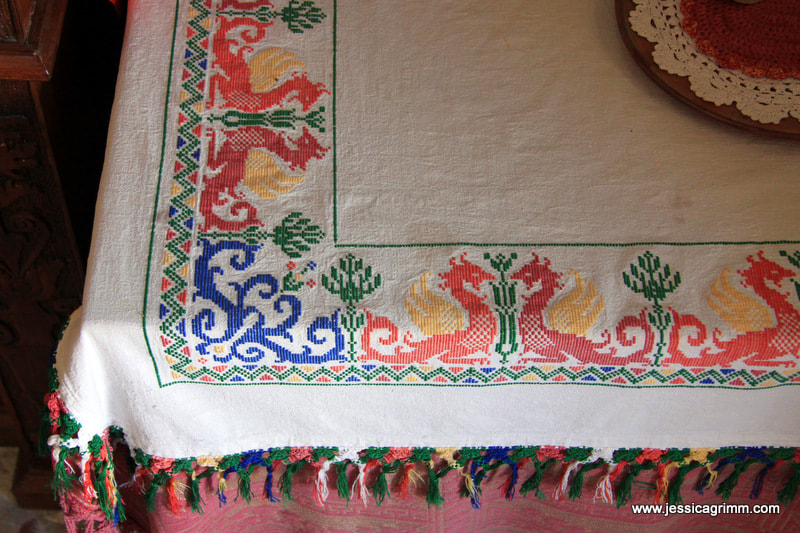
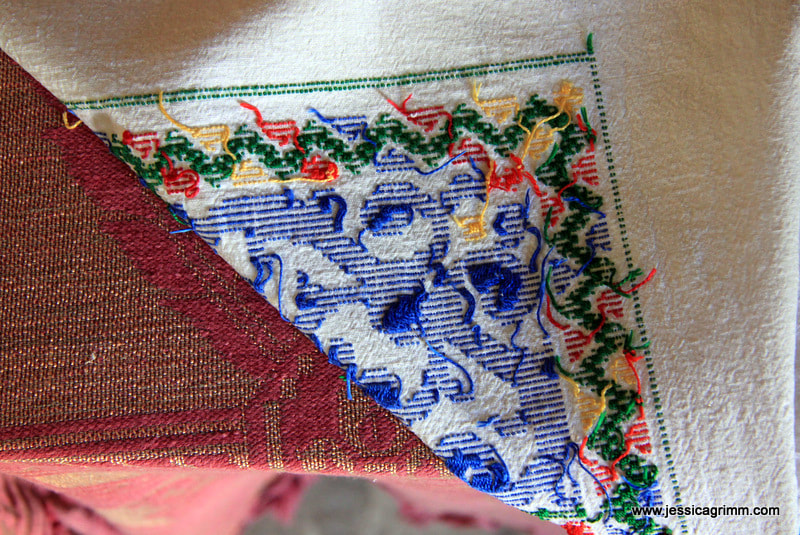
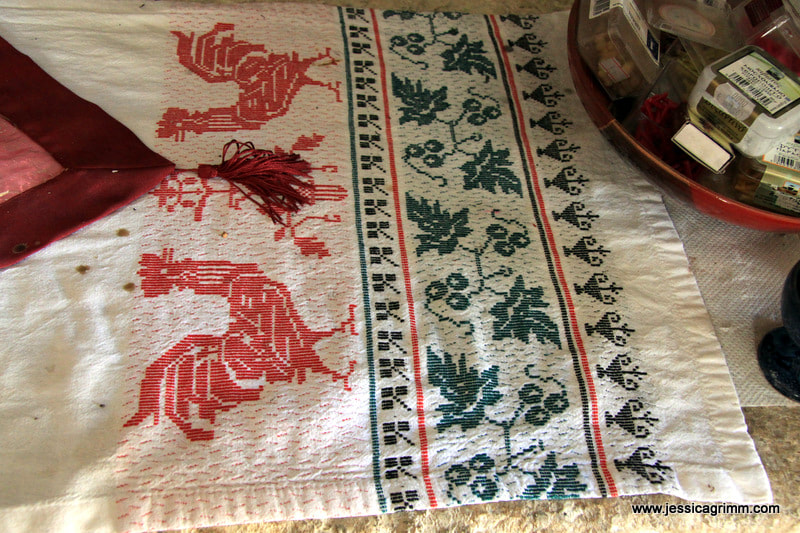
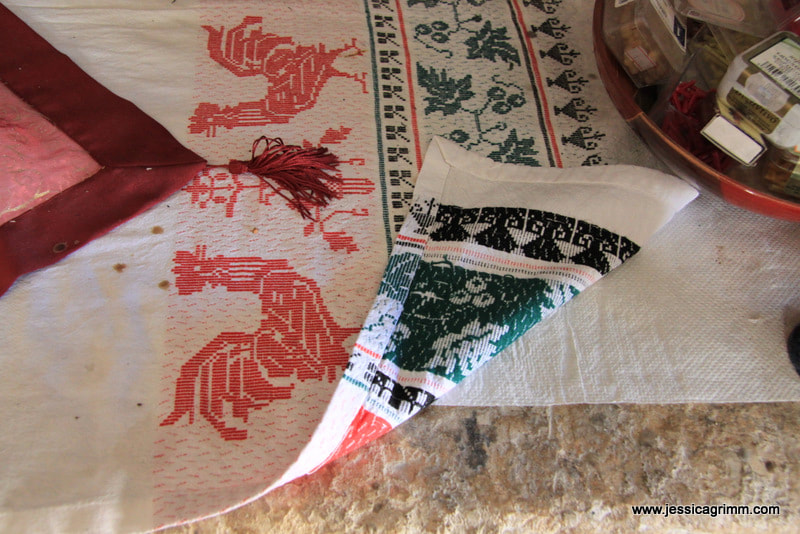
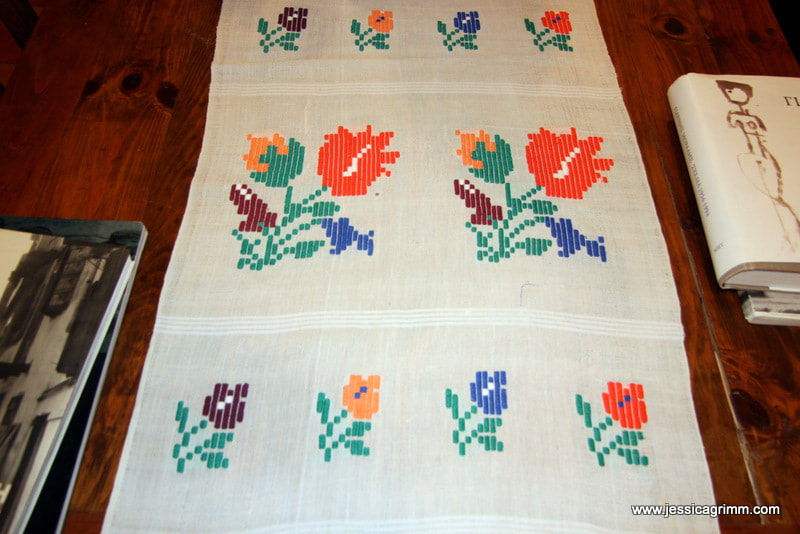
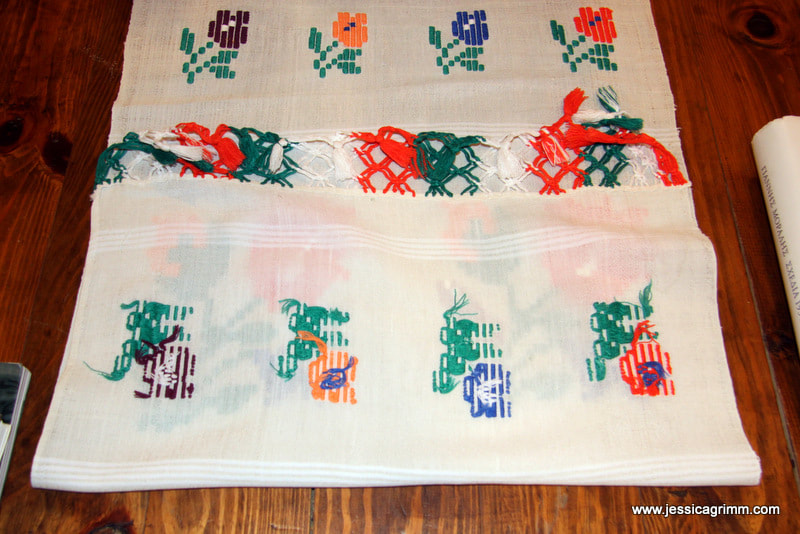
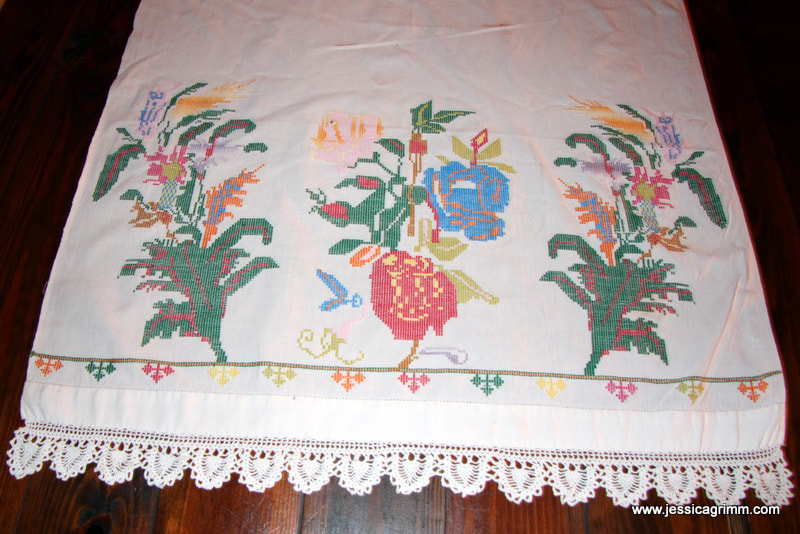
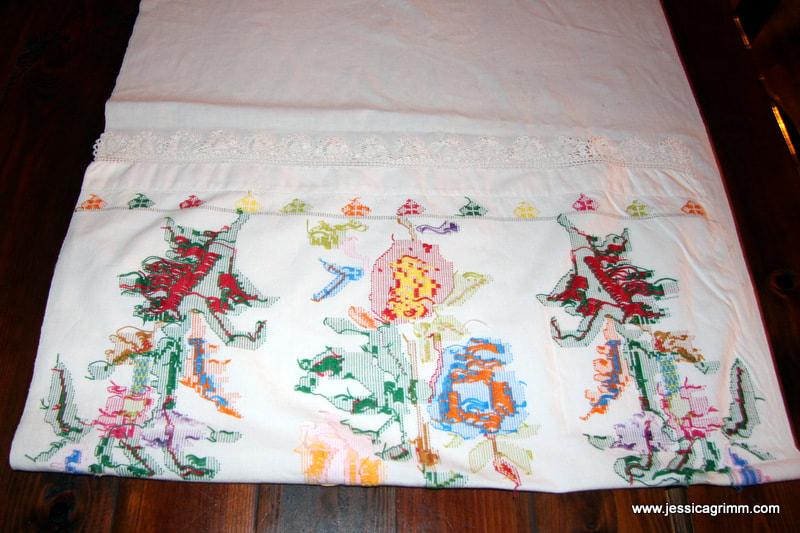





 RSS Feed
RSS Feed